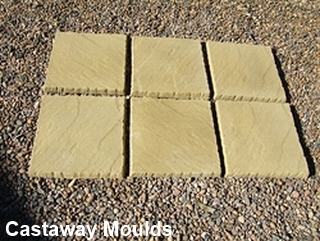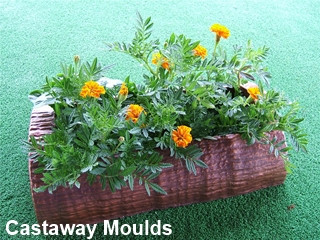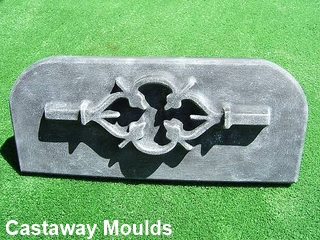No products in the cart.
Cement Mix Ratios
Over the years we have heard of many different mix ratios and what might work for one person or mould may not necessarily work for another. It is also impossible to say how much water to add to the mix as the moisture in the sand content can vary greatly. The colour of the sand can also vary from quarry to quarry or area to area, there are also different shades of cement colours grey, white, ivory, So at the end of the day it is up to what the end user is trying to achieve.
Whilst this may seem daunting, it is not as bad as it seems, and providing everything is measured out equally (like measuring out ingredients to bake a cake) there should be no reason not to achieve the right results again and again. It is useful to keep notes on what sand:cement ratios you used and how much oxide pigment dye was used if any.
We have always used containers to measure out sand or stone. Builders buckets are ideal, it is also wise to weigh out oxide pigment dye and keep in sandwich type bags so the right amount of dye goes in to the mix every time. This is an ideal way to achieve a consistent colour every time when producing large amounts (ie. many pavers). There are a range of cement dyes available (see our range). We currently stock the most popular colours and it should be remembered that the more dye used, the deeper in colour the finished product will be. White cement can also be used to give a greater range and variation of colours from the same colour dye.
It is important to always add the dye at the same time as adding the cement.
We have also found the best type of mix is to be a wet-pourable type mix. If using a cement mixer it is sometimes easier to pour the wet mix into a wheel barrow and work from the barrow not the mixer depending on your set up.
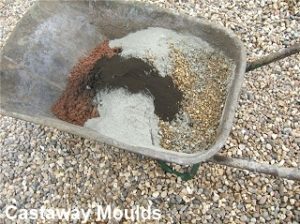
The picture above shows the dry ingredients required.
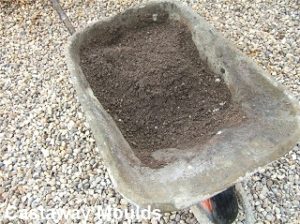
Mixing should then occur to combine all dry ingredients.
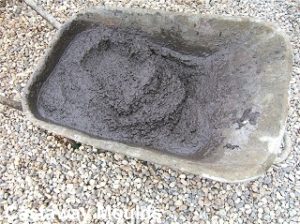
Water is then be added to achieved a pourable mix
Mix Ratio for Pavers
Of equal size containers:
- 3 x 10mm pebble
- 2 x sand (often called River Sand or Sharp Sand)
- 1 x cement
Oxide pigment dye may be added as required if needed.
Mix Ratio for Ornaments
Of equal size containers:
- 2 x 10mm pebble
- 3 x sand (often called River Sand or Sharp Sand)
- 1 x cement
Oxide pigment dye may again be added as required if needed.
Drying Times
These pourable mixes are then able to fill the required moulds.
Drying times greatly depend upon the ambient air temperature, though usually moulds are able to be turned out after a 24-hour period.


